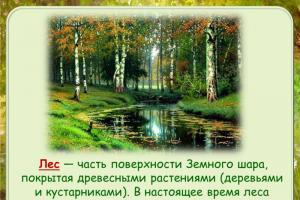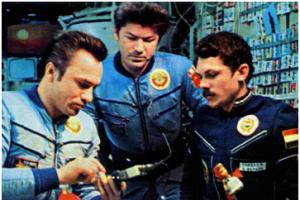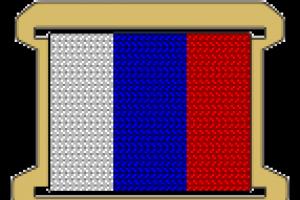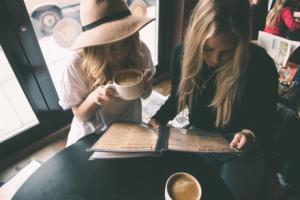In constructing electronic circuits, you can use the universal printed circuit board with holes without tracks, but it is more convenient to use a printed circuit board made according to this scheme.
Eat different ways manufacturing printed circuit boards, but this article will discuss the photoresist method.
This method is, of course, more expensive than LUT, but the result is almost always ideal, the main thing is to get the hang of it. And in aesthetic terms, photoresist has all the advantages.
A photoresist is a light-sensitive substance (in our case it’s a varnish) that changes its properties when exposed to light. A photomask is applied to the photoresist and it is illuminated, after which the exposed (or unexposed) areas of the photoresist are washed off with a special solvent, which is usually caustic soda (NaOH).
All photoresists are divided into two categories: positive and negative. For positive photoresists, the track on the board corresponds to a black area on the photomask, and for negative ones, accordingly, a transparent area. Many enterprises work with negative photoresists, but we will use positive ones, as they are most widely available on the market. Let us dwell in more detail on the use of positive photoresists in aerosol packaging.
When manufacturing printed circuit boards, especially complex ones, the most suitable method is using photoresist. Its main advantage is
high-contrast pattern on PCB with a resolution of 0.1mm (0.1mm is ideal, but 0.25mm works great) when made at home. In addition, sometimes when making a printed circuit board, an important requirement relates to aesthetic design finished product, especially if the PCB is in the "open" position or is packaged in a transparent thermal tube.
Detailed description of PCB manufacturing
Preparation of textolite
To make a printed circuit board with minimal material costs, you need to carefully prepare the PCB before applying varnish.

We assume that the textolite is cut into approximate size future printed circuit board with a margin of 5mm at the edges on each side. Usually, copper grouting begins with special abrasive pastes, but if this is not available, a mixture of dishwashing gel and washing-up cleaning powder will do. We grout with a metal mesh for washing dishes, thereby removing oxides and dirt from the surface of the PCB, and the mesh, in turn, will scratch the foil, which will further increase the adhesion of the varnish (photoresist) to the surface.

Grouting is carried out depending on the degree of surface contamination until
the surface will not have a uniform, even shade, actually golden.
Chemical stains on the PCB can be removed before applying photoresist by dipping the PCB into a solution of hot ferric chloride; if the foil on the PCB becomes uniformly red, then, in principle, future etching will take place without problems; the board should be thoroughly washed after this method hot water and re-polish with abrasive to a golden hue.

Now we wash the cleaned textolite with hot water and try to
do not touch the surface with your hands...

Now dry at a temperature of 60-70°C for a minute until the surface takes on a slight pinkish tint. If frost has formed on the surface during this process, it must be removed with a napkin. There should be no lint on the surface!
For drying, an ordinary hair dryer is suitable...

Preparing a photo template
While the PCB is cooling, we are preparing a photomask... In this case, there are several ways to make it, but I strongly recommend using an inkjet printer with a black print resolution of at least 1200 dpi. We will print on transparent film (for inkjet printers it has lint, for laser printers without lint there is a special thermal film).
We draw attention to a typical mistake when you first independently
manufacturing a printed circuit board - we usually forget to “mirror” front side
printed circuit board.
Attention! The front side of the printed circuit board must be mirrored when printing! Reverse is not mirrored!
Thus, after printing, the design on the film will be turned upside down on the working side of the film (for inkjet film, this is the fleecy side). And when we project the image onto the textolite, the film will be applied with the working side to it and the projected image will be correct (no longer mirrored). To avoid mistakes when printing, I recommend putting, for example, the letters of your initials on the photo template.

I recommend making a couple of copies of photo templates for rational use
films and eliminating errors when developing photoresist... I.e. make not just one signet, but for example, two at the same time (if they are not large), then choose the highest quality one and etch it in ferric chloride.
We check the photomask (positive) printed in this way for transparency; ideally, the working drawing (printed conductors) should be completely black!
We cut off the photomask from the film and try to make it smoother; the remaining piece of film can be used again (for printing another project).

In my example, I divided the photo template into two, and I will make two at the same time
boards...
Application of photoresist
Since it has cooled down during this time, it is time to apply a light-sensitive varnish to it. It is recommended to do this in a dark room with low light in order to see what layer of photoresist we have applied.

This process is one of the most important, namely, it should be quickly applied
an even layer of varnish with a faint purple tint without bubbles or streaks!
It is, of course, recommended to spray the photoresist in a centrifuge, but if you don’t have one, you can do it “by hand” as in the photo above. Having immediately assessed the approximate shade by eye, we draw the following conclusion - whether it is worth moving on to the next phase of the operation or not. The shade should be pale purple, transparent, that is, the copper (scratches on it from the metal mesh) should be visible! Don’t be alarmed that the photoresist has such a thin layer after application - the main thing is that we isolated the copper before etching.
It is usually recommended to dry the photoresist for an hour, but I dry it at a relatively high temperature of 60-70ºC for 3-5 minutes. Then I leave the PCB to cool until it has completely cooled down. When drying, do not overheat the board, the varnish may peel off, and do not cool it too quickly! It’s better to wait an extra 5 minutes, but then the result will be excellent... the main thing in this matter is not to rush!
We do not forget, of course, that we perform this entire procedure in low light.
(weak energy-saving lamp or Fluorescent Lamp somewhere behind us they won’t do much harm).
After the photoresist has dried, you should carefully inspect the surface.
of the varnish we applied, there should be no sagging on the edges of the board, it’s better to just carefully rip them off, it is for this purpose that the PCB is recommended to be cut with a margin of 5mm at the edges. Usually, sagging forms on one edge, see the photo above; the board is specially tilted before applying varnish so that the photoresist, or rather its excess, flows onto one of the edges of the board. When spraying in a centrifuge, this option is practically eliminated.
Exhibition
This process is not complicated and short-term; it consists of preparing a photomask on the surface of the photoresist and its subsequent illumination with a mercury lamp (ultraviolet spectrum).
I use medical irradiators to disinfect premises (UFO-1, UFO-2 and the like). UFO-1 contains a 100 W mercury quartz lamp paired with an incandescent spiral in quartz tubes (they act as a resistor and are like infrared lamps with strong heat release). Since the times of the USSR, many people have had similar emitters in their apartments... We only need this from this emitter:

If this is not available, a 500 W floodlight for garages, parking lots, etc., for example from the Cosmos company, will do, I used to illuminate it, I don’t remember the illumination time, I will have to select it experimentally, and the illumination distance is at least 30 cm ( heat the spotlight will be damaged by the photoresist, it will stick to the template).

Quickly place the photomask with the working side on the sprayed photoresist.
film and cover with a piece of thin glass (from a photo frame, for example). And we illuminate the photomask from a distance of at least 25 cm, but no more than 35 cm when using UFO-1 for exactly 2 minutes 15 seconds, if the photoresist has a faint violet tint:

After exposure, we put the board in a dark place for 5-8 minutes, like for
fixing the photoresist...
Preparation of the solution
While the photoresist is being fixed, we are preparing a solution for etching it. Both German and Belgian manufacturers recommend using caustic soda, also known as caustic soda, coarse-grained powder for developing. white, not transparent, and literally caustic. That is, you should work in rubber gloves.
Mix 7 grams of this substance per liter of warm water until the powder is completely dissolved; the sediment can be removed. If you mix in hot water, then the precipitate will also dissolve. Let's take a container, for example, a plastic container. We lower our illuminated board into it. (The solution should not be hot, just warm is better!).

Immediately after development, thoroughly rinse the board. warm water washing off the remains caustic soda. In my photo, this process took less than a minute, since my solution is not 7 grams per liter of water, but somewhat more... Initially, the solution of caustic soda in water is transparent, then it will change shade - it will turn purple (seen in the photo above), i.e. there is varnish dissolved in it.
The solution can be used repeatedly, I used it up to five times with a week
The photoresist was developed at intervals, and the solution was already dark purple in color.
Board etching
Well, actually now we poison it in a solution of ferric chloride in water in a ratio of 1:3

As you can see in the photo, my varnish is transparent, the copper is clearly visible... After etching
remove ferric chloride varnish with acetone or another solvent (646, 647, 650).
You can also etch with other solutions, such as copper sulfate with salt or citric acid.
Cut the board to size and process along the contour.
All! The board is ready!
We have a factory prototype board of this type at our disposal:
I don't like her for two reasons:
1) When installing parts, you have to constantly turn back and forth in order to first install the radio component, and then solder the conductor. It behaves unsteadily on the table.
2) After dismantling, the holes remain filled with solder; before the next use of the board, you have to clean them.
Searching on the Internet different kinds breadboards that you can make with your own hands and from available materials, came across a few interesting options, one of which decided to repeat.
Option #1
Quote from the forum: « For example, I have been using these homemade ones for many years development boards. Assembled from a piece of fiberglass into which copper pins are riveted. Such pins can either be bought on the radio market or made yourself from copper wire with a diameter of 1.2-1.3 mm. Thinner pins bend too much, and thicker pins take up too much heat when soldering. This “breadboard” allows you to reuse the most shabby radioelements. It is better to make connections with wire in fluoroplastic insulation MGTF. Then, once made, the ends will last a lifetime.”
I think this option will suit me best. But fiberglass and ready-made copper pins are not available, so I’ll do it a little differently.
Copper wire extracted from the wire:

I stripped the insulation and, using a simple limiter, made pins of the same length:

Pin diameter - 1 mm.

I used thick plywood as the basis for the board. 4 mm (The thicker it is, the stronger the pins will hold.):

In order not to have to worry about markings, I taped the lined paper onto the plywood:

And drilled holes in increments 10 mm drill diameter 0.9 mm:

We get even rows of holes:

Now you need to drive the pins into the holes. Since the diameter of the hole is smaller than the diameter of the pin, the connection will be tight and the pin will be tightly fixed in the plywood.

When driving pins under the bottom of the plywood, you need to place a metal sheet. The pins are driven in with light movements, and when the sound changes, it means the pin has reached the sheet.
To prevent the board from fidgeting, we make legs:

Glue:

The breadboard is ready!
Using the same method, you can make a surface-mount board (photo from the Internet, radio):

Below, to complete the picture, I will present several suitable designs found on the Internet.
Option No. 2Push pins with a metal head are hammered into a section of the board:

All that remains is to tin them. Copper-plated buttons can be tinned without problems, but with steel ones. 
I don’t know about you, but I have a fierce hatred for classic circuit boards. The installation is such a crap with holes where you can insert parts and solder them, where all connections are made through wiring. It seems simple, but it turns out to be such a mess that understanding anything in it is very problematic. Therefore, there are errors and burnt parts, incomprehensible glitches. Well, screw her. Just spoil your nerves. It’s much easier for me to draw a circuit in my favorite one and immediately etch it in the form of a printed circuit board. Using laser-iron method everything comes out in about an hour and a half of easy work. And, of course, this method is excellent for making the final device, since the quality of printed circuit boards obtained by this method is very high. And since this method is very difficult for the inexperienced, I will be happy to share my proven technology, which allows you to get printed circuit boards the first time and without any stress with tracks 0.3mm and clearance between them up to 0.2mm. As an example, I will make a development board for my controller tutorial AVR. You will find the principle in the entry, and
There is a demo circuit on the board, as well as a bunch of copper patches, which can also be drilled out and used for your needs, like a regular circuit board.
▌Technology for manufacturing high-quality printed circuit boards at home.
The essence of the method for manufacturing printed circuit boards is that a protective pattern is applied to the foil-coated PCB, which prevents etching of copper. As a result, after etching, traces of conductors remain on the board. There are many ways to apply protective patterns. Previously, they were painted with nitro paint using a glass tube, then they began to be applied with waterproof markers or even cut out of tape and pasted on the board. Also available for amateur use photoresist, which is applied to the board and then illuminated. The exposed areas become soluble in alkali and are washed off. But in terms of ease of use, cheapness and speed of production, all these methods are much inferior laser-iron method(Further LUT).
The LUT method is based on the fact that a protective pattern is formed by toner, which is transferred to the PCB by heating.
So we will need a laser printer, since they are not uncommon now. I use a printer Samsung ML1520 with original cartridge. Refilled cartridges fit extremely poorly, as they lack density and uniformity of toner dispensing. In the print properties, you need to set the maximum toner density and contrast, and be sure to disable all saving modes - this is not the case.
▌Tools and materials
In addition to foil PCB, we also need a laser printer, an iron, photo paper, acetone, fine sandpaper, a suede brush with metal-plastic bristles,
▌Process
Next, we draw a drawing of the board in any software convenient for us and print it. Sprint Layout. A simple drawing tool for circuit boards. To print normally, you need to set the layer colors on the left to black. Otherwise it will turn out to be garbage.

Printing, two copies. You never know, maybe we'll screw one up.
This is where the main subtlety of the technology lies LUT because of which many have problems with the release of high-quality boards and they give up this business. Through many experiments it was found that the most best result achieved when printing on glossy photo paper for inkjet printers. I would call photo paper ideal LOMOND 120g/m2

It is inexpensive, sold everywhere, and most importantly, it gives an excellent and repeatable result, and its glossy layer does not stick to the printer’s stove. This is very important, as I have heard about cases where glossy paper was used to dirty the printer oven.
We load the paper into the printer and confidently print on the glossy side. You need to print in a mirror image so that after transfer the picture corresponds to reality. I can’t count how many times I made mistakes and made incorrect prints :) Therefore, for the first time, it’s better to print on plain paper for a test and check that everything is correct. At the same time, you will warm up the printer oven.

After printing the picture, in no case Do not grab with your hands and preferably keep away from dust. So that nothing interferes with the contact of the toner and copper. Next, we cut out the board pattern exactly along the contour. Without any reserves - the paper is hard, so everything will be fine.
Now let's deal with the textolite. Let's cut a piece right away the right size, without tolerances and allowances. As much as needs.

It needs to be sanded well. Carefully, trying to remove all the oxide, preferably in a circular motion. A little roughness won't hurt - the toner will stick better. You can take not sandpaper, but an “effect” abrasive sponge. You just need to take a new one, not greasy.

It’s better to take the smallest skin you can find. I have this one.

After sanding, it must be thoroughly degreased. I usually use my wife’s cotton pad and, after moistening it thoroughly with acetone, I thoroughly go over the entire surface. Again, after degreasing, you should never grab it with your fingers.

We put our drawing on the board, naturally with the toner down. Warming up iron to maximum, holding the paper with your finger, firmly press and iron one half. The toner needs to stick to the copper.

Next, without allowing the paper to move, iron the entire surface. We press with all our might, polish and iron the board. Trying not to miss a single millimeter of the surface. This is a most important operation; the quality of the entire board depends on it. Don’t be afraid to press as hard as you can; the toner won’t float or smear, since the photo paper is thick and perfectly protects it from spreading.
Iron until the paper turns yellow. However, this depends on the temperature of the iron. My new iron hardly turns yellow, but my old one almost charred - the result was equally good everywhere.

Afterwards you can let the board cool down a bit. And then, grabbing it with tweezers, we put it under water. And we keep it in the water for some time, usually about two to three minutes.
Taking a suede brush, under a strong stream of water, we begin to violently lift the outer surface of the paper. We need to cover it with multiple scratches so that the water penetrates deep into the paper. In confirmation of your actions, the drawing will be shown through thick paper.

And with this brush we brush the board until we remove the top layer.

When the entire design is clearly visible, without white spots, you can begin to carefully roll the paper from the center to the edges. Paper Lomond Rolls out beautifully, leaving 100% toner and pure copper almost immediately.

Having rolled out the entire pattern with your fingers, you can thoroughly scrub the entire board with a toothbrush to clean out the remaining glossy layer and scraps of paper. Don’t be afraid, it’s almost impossible to remove well-cooked toner with a toothbrush.

We wipe the board and let it dry. When the toner dries and turns gray, it will be clearly visible where the paper remains and where everything is clean. The whitish films between the tracks must be removed. You can destroy them with a needle, or you can rub them with a toothbrush under running water. In general, it is useful to walk along the paths with a brush. The whitish gloss can be pulled out of narrow cracks using electrical tape or masking tape. It doesn't stick as violently as usual and doesn't strip off the toner. But the remaining gloss comes off without a trace and immediately.

Under the light of a bright lamp, carefully examine the toner layers for tears. The fact is that when it cools, it can crack, then a narrow crack will remain in this place. Under the light of the lamp, the cracks sparkle. These places need painting permanent marker for CDs. Even if there is only a suspicion, it is still better to paint over it. The same marker can also be used to fill in poor-quality paths, if any. I recommend a marker Centropen 2846- it gives a thick layer of paint and, in fact, you can stupidly paint paths with it.
When the board is ready, you can water the ferric chloride solution.

Technical digression, you can skip it if you wish.
In general, you can poison a lot of things. Someone is poisoning copper sulfate, some are in acidic solutions, and I am in ferric chloride. Because It is sold in any radio store, it transmits quickly and cleanly.
But ferric chloride has a terrible drawback - it just gets dirty. If it gets on clothing or any porous surface like wood or paper, it will be a stain for life. So put your Dolce Habana sweatshirts or Gucci felt boots in the safe and wrap them with three rolls of tape. Ferric chloride also destroys almost all metals in the most cruel way. Aluminum and copper are especially fast. So the utensils for etching should be glass or plastic.
I'm throwing 250 gram packet of ferric chloride per liter of water. And with the resulting solution I etch dozens of boards until the etch stops.
The powder must be poured into water. And make sure that the water does not overheat, otherwise the reaction will lead to the release of large quantity heat.
When all the powder has dissolved and the solution has acquired a uniform color, you can throw the board in there. It is desirable that the board floats on the surface, copper side down. Then the sediment will fall to the bottom of the container without interfering with the etching of the deeper layers of copper.
To prevent the board from sinking, you can stick a piece of foam plastic to it with double-sided tape. That's exactly what I did. It turned out very convenient. I screwed in the screw for convenience, so that I could hold it like a handle.
It is better to dip the board into the solution several times, and lower it not flat, but at an angle, so that no air bubbles remain on the surface of the copper, otherwise there will be jambs. Periodically you need to remove it from the solution and monitor the process. On average, etching a board takes from ten minutes to an hour. It all depends on the temperature, strength and freshness of the solution.
The etching process accelerates very sharply if you lower the hose from the aquarium compressor under the board and release bubbles. The bubbles mix the solution and gently knock out the reacted copper from the board. You can also shake the board or container, the main thing is not to spill it, otherwise you won’t be able to wash it off later.
When all the copper has been removed, carefully remove the board and rinse it under running water. Then we look at the clearing so that there is no snot or loose grass anywhere. If there is snot, then throw it into the solution for another ten minutes. If the tracks are etched or breaks occur, it means the toner is crooked and these places will need to be soldered with copper wire.

If everything is fine, then you can wash off the toner. For this we need acetone - the true friend of a substance abuser. Although now it is becoming more difficult to buy acetone, because... Some idiot from the state drug control agency decided that acetone is a substance used to prepare narcotics, and therefore its free sale should be prohibited. It works fine instead of acetone 646 solvent.

Take a piece of bandage and thoroughly moisten it with acetone and begin to wash off the toner. There is no need to press hard, the main thing is not to mess around too quickly so that the solvent has time to be absorbed into the pores of the toner, corroding it from the inside. It takes about two to three minutes to wash off the toner. During this time, even the green dogs under the ceiling will not have time to appear, but it still won’t hurt to open the window.
The cleaned board can be drilled. For these purposes, I have been using a motor from a tape recorder, powered by 12 volts, for many years. It’s a monster machine, although its lifespan lasts for about 2000 holes, after which the brushes burn out completely. You also need to rip out the stabilization circuit from it by soldering the wires directly to the brushes.

When drilling, you should try to keep the drill strictly perpendicular. Otherwise, then you’ll put a microcircuit in there. And with double-sided boards, this principle becomes basic.

The manufacture of a double-sided board occurs in the same way, only here three reference holes are made, with the smallest possible diameter. And after etching one side (at this time the other is sealed with tape so that it does not get etched), the second side is aligned along these holes and rolled. The first one is sealed tightly with tape and the second one is etched.
On the front side you can use the same LUT method to apply the designation of radio components for beauty and ease of installation. However, I don’t bother that much, but comrade Woodocat from the LJ community ru_radio_electr He always does this, for which I have great respect!
Soon I will probably also publish an article on photoresist. The method is more complicated, but at the same time it gives me more fun to do - I like to play tricks with reagents. Although I still make 90% of the boards using LUT.
By the way, about the accuracy and quality of boards made using the laser ironing method. Controller P89LPC936 in the case TSSOP28. The distance between the tracks is 0.3mm, the width of the tracks is 0.3mm.

Resistors on the top size board 1206 . What's it like?
How to prepare a board made in Eagle for production
Preparation for production consists of 2 stages: technology constraint check (DRC) and generation of Gerber files
DRC
Each manufacturer of printed circuit boards has technological restrictions on the minimum width of tracks, gaps between tracks, hole diameters, etc. If the board does not meet these restrictions, the manufacturer refuses to accept the board for production.
When creating a PCB file, the default technology constraints are set from the default.dru file in the dru directory. Typically, these limits do not match those of real manufacturers, so they need to be changed. It is possible to set the restrictions just before generating the Gerber files, but it is better to do this immediately after generating the board file. To set restrictions, press the DRC button
Gaps
Go to the Clearance tab, where you set the gaps between the conductors. We see 2 sections: Different signals And Same signals. Different signals- determines the gaps between elements belonging to different signals. Same signals- determines the gaps between elements belonging to the same signal. As you move between input fields, the picture changes to show the meaning of the entered value. Dimensions can be specified in millimeters (mm) or thousandths of an inch (mil, 0.0254 mm).

Distances
On the Distance tab, the minimum distances between the copper and the edge of the board are determined ( Copper/Dimension) and between the edges of the holes ( Drill/Hole)
Minimum dimensions
On the Sizes tab for double-sided boards, 2 parameters make sense: Minimum Width - minimum width conductor and Minimum Drill- minimum hole diameter.
Belts
On the Restring tab, you set the sizes of the bands around vias and contact pads of lead components. The width of the belt is set as a percentage of the hole diameter, and you can set a limit on the minimum and maximum width. For double-sided boards the parameters make sense Pads/Top, Pads/Bottom(pads on the top and bottom layer) and Vias/Outer(vias).
Masks
On the Masks tab, you set the gaps from the edge of the pad to the solder mask ( Stop) and solder paste ( Cream). Clearances are set as a percentage of the smaller pad size, and you can set a limit on the minimum and maximum clearance. If the board manufacturer does not specify special requirements, you can leave the default values on this tab.
Parameter Limit defines the minimum diameter of the via that will not be covered by the mask. For example, if you specify 0.6mm, then vias with a diameter of 0.6mm or less will be covered by a mask.
Running a scan
After setting the restrictions, go to the tab File. You can save settings to a file by clicking the button Save As.... In the future, you can quickly download settings for other boards ( Load...).
At the touch of a button Apply established technology limitations apply to the PCB file. It affects layers tStop, bStop, tCream, bCream. Vias and pin pads will also be resized to meet the constraints specified in the tab Restring.
Button press Check starts the constraint control process. If the board meets all restrictions, a message will appear in the program status line No errors. If the board does not pass inspection, a window appears DRC Errors

The window contains a list of DRC errors, indicating the error type and layer. When you double-click on a line, the area of the board with the error will be shown in the center of the main window. Error types:
gap too small
hole diameter too small
intersection of tracks with different signals
foil too close to the edge of the board
After correcting the errors, you need to run the control again and repeat this procedure until all errors are eliminated. The board is now ready to output to Gerber files.
Generating Gerber files
From the menu File choose CAM Processor. A window will appear CAM Processor.

The set of file generation parameters is called a task. The task consists of several sections. The section defines the output parameters of one file. By default, the Eagle distribution contains the task gerb274x.cam, but it has 2 drawbacks. Firstly, the lower layers are displayed in a mirror image, and secondly, the drilling file is not output (to generate the drilling, you will need to perform another task). Therefore, let's consider creating a task from scratch.
We need to create 7 files: board borders, copper on top and bottom, silkscreen on top, solder mask on top and bottom, and drill bit.
Let's start with the boundaries of the board. In field Section enter the section name. Checking what's in the group Style installed only pos. Coord, Optimize And Fill pads. From the list Device choose GERBER_RS274X. In the input field File The name of the output file is entered. It is convenient to place the files in a separate directory, so in this field we will enter %P/gerber/%N.Edge.grb . This means the directory where the board source file is located, the subdirectory gerber, original board file name (no extension .brd) with added at the end .Edge.grb. Please note that subdirectories are not created automatically, so you will need to create a subdirectory before generating files gerber in the project directory. In the fields Offset enter 0. In the list of layers, select only the layer Dimension. This completes the creation of the section.
To create a new section, click Add. A new tab appears in the window. We set the section parameters as described above, repeat the process for all sections. Of course, each section must have its own set of layers:
copper on top - Top, Pads, Vias
copper bottom - Bottom, Pads, Vias
silkscreen printing on top - tPlace, tDocu, tNames
mask on top - tStop
mask from below - bStop
drilling - Drill, Holes
and the file name, for example:
copper on top - %P/gerber/%N.TopCopper.grb
copper bottom - %P/gerber/%N.BottomCopper.grb
silkscreen printing on top - %P/gerber/%N.TopSilk.grb
mask on top - %P/gerber/%N.TopMask.grb
bottom mask - %P/gerber/%N.BottomMask.grb
drilling - %P/gerber/%N.Drill.xln
For a drill file, the output device ( Device) should be EXCELLON, but not GERBER_RS274X
It should be kept in mind that some board manufacturers only accept files with names in 8.3 format, that is, no more than 8 characters in the file name, no more than 3 characters in the extension. This should be taken into account when specifying file names.
We get the following:

Then open the board file ( File => Open => Board). Make sure the board file has been saved! Click Process Job- and we get a set of files that can be sent to the board manufacturer. Please note that in addition to the actual Gerber files, information files will also be generated (with extensions .gpi or .dri) - you do not need to send them.

You can also display files only from individual sections by selecting the desired tab and clicking Process Section.
Before sending the files to the board manufacturer, it's helpful to preview what you've produced using a Gerber viewer. For example, ViewMate for Windows or for Linux. It can also be useful to save the board as a PDF (in the board editor File->Print->PDF button) and send this file to the manufacturer along with the gerberas. Because they are people too, this will help them not make mistakes.
Technological operations that must be performed when working with SPF-VShch photoresist
1. Surface preparation.
a) cleaning with polished powder (“Marshalit”), size M-40, washing with water
b) pickling with a 10% sulfuric acid solution (10-20 sec), rinsing with water
c) drying at T=80-90 gr.C.
d) check - if within 30 seconds. a continuous film remains on the surface - the substrate is ready for use,
if not, repeat all over again.
2. Application of photoresist.
Photoresist is applied using a laminator with Tshaft = 80 g.C. (see instructions for using the laminator).
For this purpose, the hot substrate (after drying cabinet) simultaneously with the film from the SPF roll is directed into the gap between the shafts, and the polyethylene (matte) film should be directed towards the copper side of the surface. After pressing the film to the substrate, the movement of the shafts begins, while polyethylene film is removed, and the photoresist layer is rolled onto the substrate. The lavsan protective film remains on top. After this, the SPF film is cut on all sides to the size of the substrate and kept at room temperature within 30 minutes. Exposure for 30 minutes to 2 days in the dark at room temperature is allowed.
3. Exposure.
Exposure through a photomask is carried out on SKTSI or I-1 installations with UV lamps such as DRKT-3000 or LUF-30 with a vacuum vacuum of 0.7-0.9 kg/cm2. The exposure time (to obtain a picture) is regulated by the installation itself and is selected experimentally. The template must be pressed well to the substrate! After exposure, the workpiece is kept for 30 minutes (up to 2 hours is allowed).
4. Manifestation.
After exposure, the drawing is developed. For this purpose, the top protective layer, the lavsan film, is removed from the surface of the substrate. After this, the workpiece is lowered into the solution soda ash(2%) at T=35 deg.C. After 10 seconds, begin the process of removing the unexposed part of the photoresist using a foam rubber swab. The time of manifestation is selected experimentally.
Then the substrate is removed from the developer, washed with water, pickled (10 sec.) with a 10% solution of H2SO4 (sulfuric acid), again with water and dried in a cabinet at T = 60 degrees C.
The resulting pattern should not peel off.
5. The resulting drawing.
The resulting pattern (photoresist layer) is resistant to etching in:
- ferric chloride
- hydrochloric acid
- copper sulfate
- aqua regia (after additional tanning)
and other solutions
6. Shelf life of SPF-VShch photoresist.
The shelf life of SPF-VShch is 12 months. Storage is carried out in a dark place at a temperature of 5 to 25 degrees. C. in an upright position, wrapped in black paper.
conditions using hydrogen peroxide. Everything is very simple and does not require much effort.
To work we will need the following list of tools:
- Program - layout 6.0.exe (other modification is possible)
- Negative photoresist (this is a special film)
- Laser printer
- Transparent film for printing
- Marker for printed circuit boards (if not, you can use nitro polish or nail polish)
- Foil PCB
- UV lamp (if there is no lamp, wait for sunny weather and use the sun’s rays, I’ve done this many times and everything works out)
- Two pieces of plexiglass (one is possible, but I made two for myself), you can also use a CD box
- Stationery knife
- Hydrogen peroxide 100 ml
- Lemon acid
- Soda
- Salt
- Level hands (this is a must)
In the layout program we do the board layout

We check it carefully so as not to confuse anything and print it

Be sure to check all the boxes on the left as shown in the photo. The photo shows that our drawing is in a negative image, since our photoresist is negative, those areas that are hit by UV rays will be tracks, and the rest will be washed off, but more on that a little later.
Next, take a transparent film to print on laser printer(available for free sale) one side is a little matte and the other is glossy, so we put the film so that the pattern is on the matte side.

We take the PCB and cut it to the size of the required board

Cut the photoresist to size (when working with photoresist, avoid straight lines sun rays, since they will ruin the photoresist)

We clean the textolite with an eraser and wipe it so that there is no debris left

Next, we tear off the protective transparent film on the photoresist.

And carefully glue it to the PCB, it is important that there are no bubbles. Iron it well so that everything sticks well.

Next we need two pieces of plexiglass and two clothespins, you can use a CD box

We place our printed template on the board, be sure to place the template with the printed side on the PCB and clamp it between the two halves of plexiglass so that everything fits tightly

Afterwards we will need a UV lamp (or a simple sun on a sunny day)

We screw the light bulb into any lamp and place it above our board at a height of about 10-20 cm. And turn it on, the illumination time from such a lamp as in the photo at a height of 15 cm for me is 2.5 minutes. I don’t recommend it for longer, you might ruin the photoresist

After 2 minutes, turn off the lamp and see what happens. Paths must be clearly visible

If everything is clearly visible, proceed to the next step.
Take the listed ingredients
- Peroxide
- Lemon acid
- Salt
- Soda

Now we need to remove the unexposed photoresist from the board; it needs to be removed in a solution of soda ash. If it doesn't exist, then you need to make it. Boil water in a kettle and pour it into a container

Pour plain soda into it. You don’t need much for 100-200 ml, 1-2 tablespoons of soda and mix well, the reaction should begin

Let the solution cool to 20-35 degrees (you can’t put the board directly into a hot solution, all the photoresist will peel off)
We take our payment and remove the second one protective film NECESSARILY

And put the board in the COOLED solution for 1-1.5 minutes

Periodically, we take out the board and wash it under running water, carefully cleaning it with your finger or a soft kitchen sponge. When all the excess is washed off, there should be a board like this left:

The photo shows that a little more was washed off than necessary, probably overexposed in the solution (which is not recommended)
But it's okay. just take a marker for printed circuit boards or nail polish and cover up all the mistakes with it


Next, pour 100 ml peroxide, 3-4 spoons into another container citric acid and 2 tablespoons of salt.








